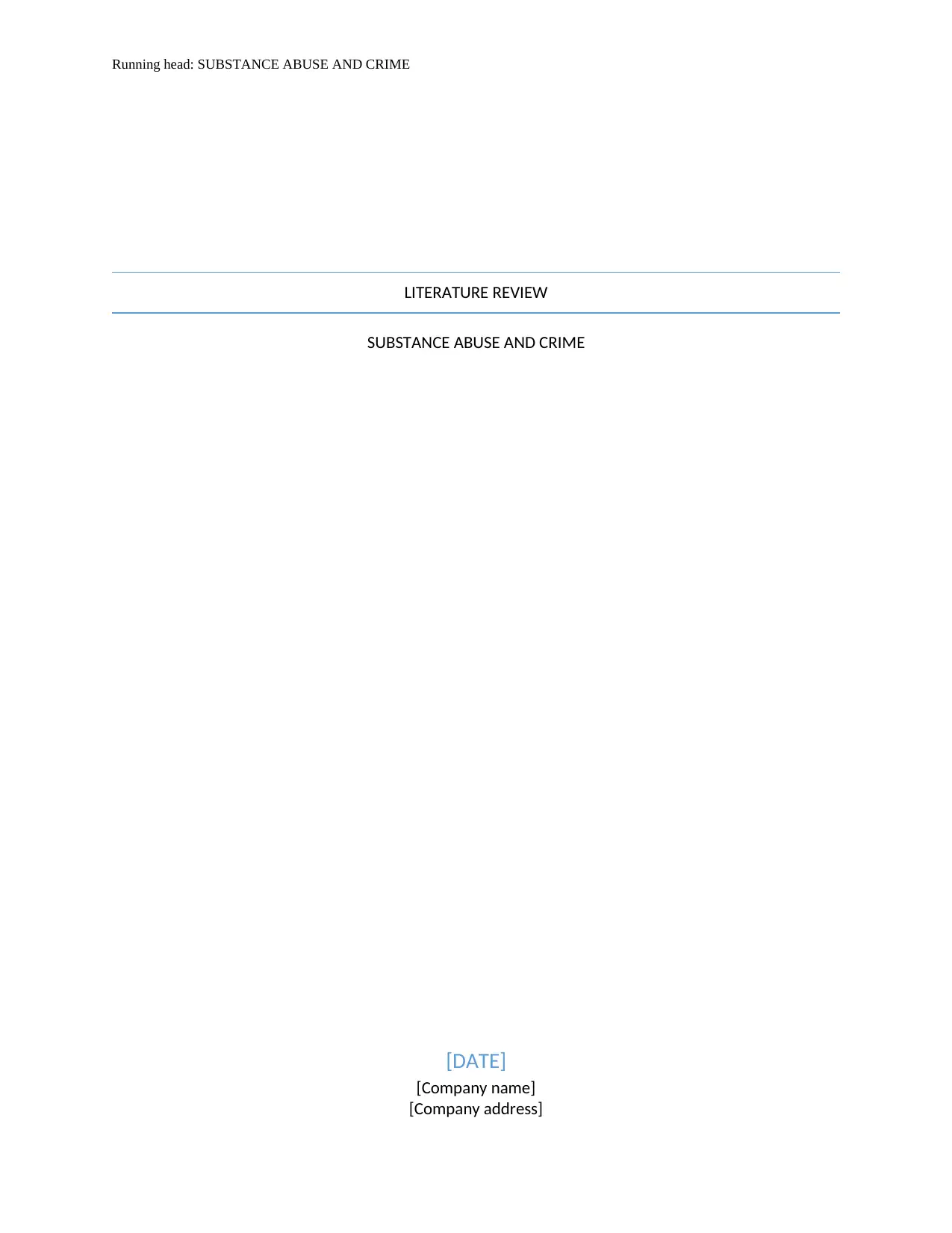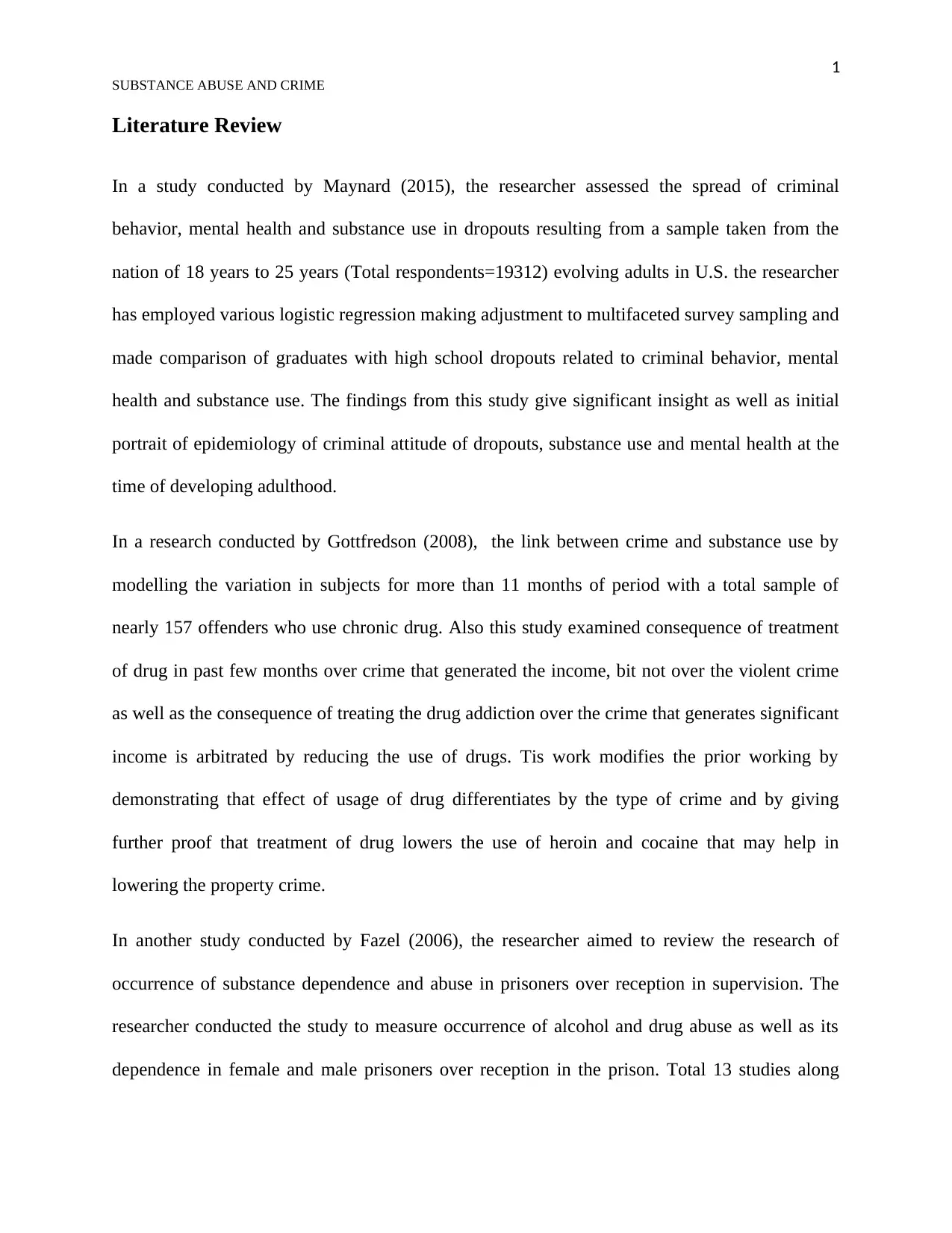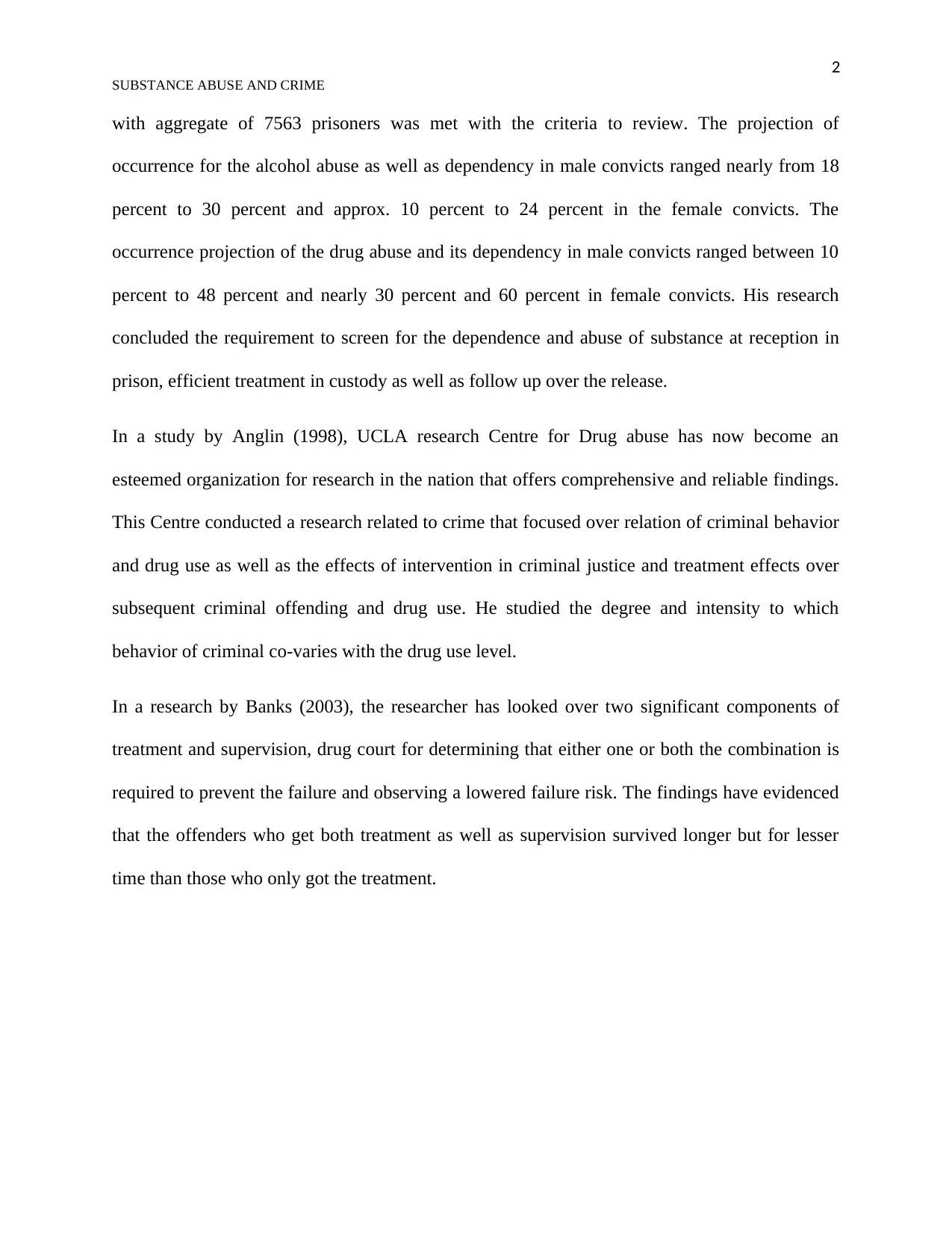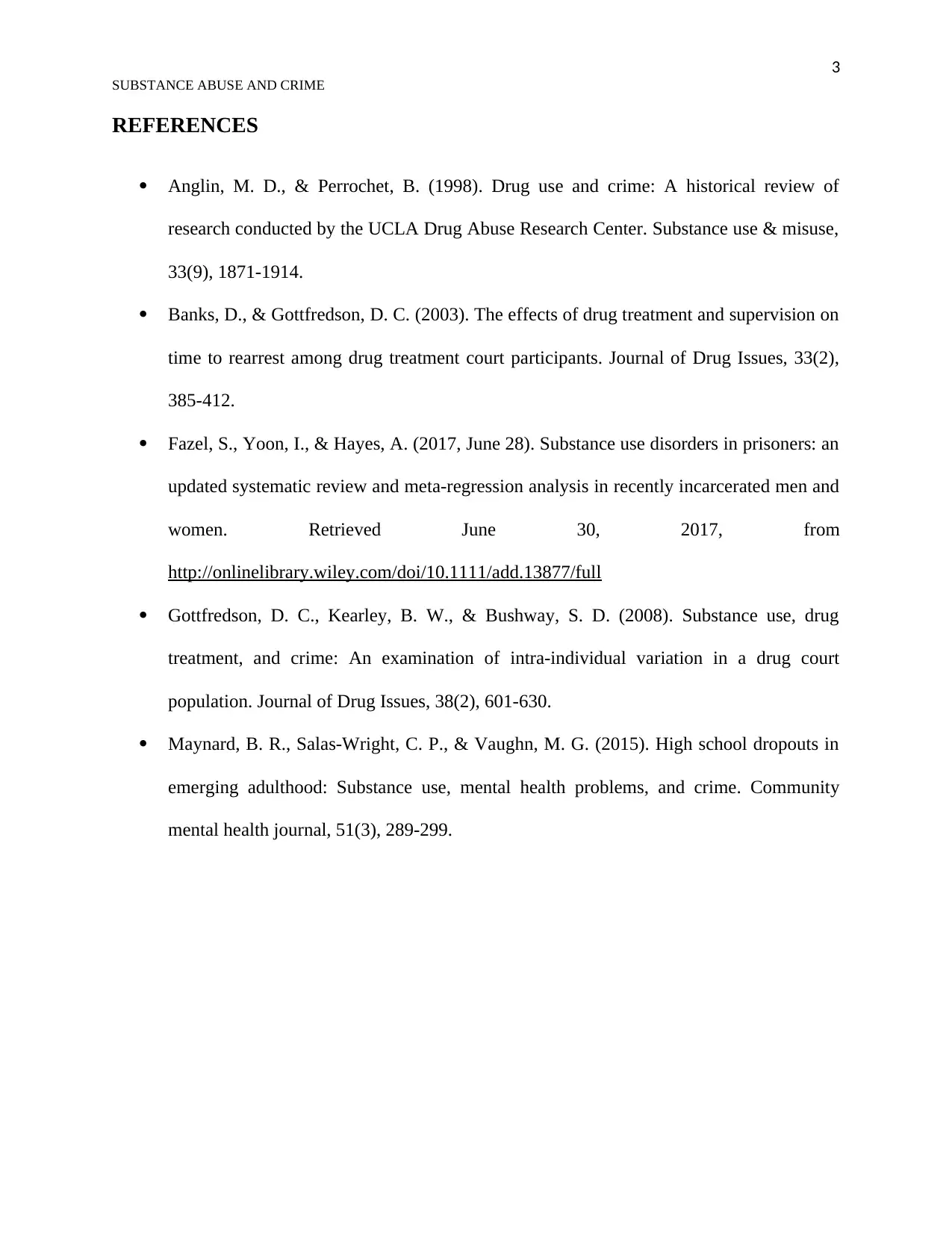An Analysis of Substance Abuse and Crime: A Literature Review
VerifiedAdded on 2019/09/25
|4
|874
|140
Literature Review
AI Summary
This literature review examines the relationship between substance abuse and crime, drawing on several key studies. Maynard (2015) investigated the correlation between substance use, mental health, and criminal behavior in high school dropouts. Gottfredson (2008) explored the link between drug use and crime among offenders, focusing on the effects of drug treatment. Fazel (2006) reviewed studies on substance abuse in prisoners, highlighting the prevalence of alcohol and drug dependence. Anglin (1998) provided a historical overview of research on drug use and crime from the UCLA Drug Abuse Research Center. Banks (2003) examined the impact of drug treatment and supervision on reducing re-arrest rates. These studies collectively underscore the complex interplay between substance abuse and criminal activity, emphasizing the need for effective interventions and treatment programs.
1 out of 4











![[object Object]](/_next/static/media/star-bottom.7253800d.svg)